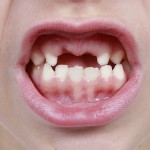
The prevalence of trauma to primary incisors has been reported to range between 11-47%. The relationship of primary teeth apices to the permanent successors raises the possibility of developmental damage to these teeth.
The aim of this review was to examine the evidence that trauma in the primary incisors is associated with sequelae in permanent successors and to investigate the association between the presence and type of sequelae in permanent teeth with the child’s age at the time of injury and type of trauma.
Methods
Searches were conducted in PubMed, Scopus, The Cochrane Library, LILACS, and Web of Science databases. Prospective and retrospective studies that assessed the association of trauma in deciduous incisors and developmental disturbances in permanent successors were selected. Two reviewers independently selected the studies and extracted the data. Studies were assessed for quality and risk of bias.
Results
- 18 studies (17 cross sectional, 1 cohort) were included (15 were considered to be susceptible to bias)
- Duration of the study ranged from 5 to 10 years.
- Dental injuries were assessed according to criteria of Andreasen and Andreasen in all studies reviewed.
- Prevalence of sequelae ranged from 20.2% – 74.1%
- Dental enamel defects were the most prevalent sequelae in all studies
- 5 studies reported a statistically significant association between the age of the child at the time of the trauma and the prevalence of sequelae in permanent dentition.
- 3 studies reported an association between the type of injury and prevalence of sequelae.
Conclusions
The authors concluded:
Despite the limitations inherent to the studies found in the literature, evidence suggests that individuals with trauma in their primary incisors have more develop- mental disorders in the permanent successors than individuals without a previous trauma. The younger the child is at the time of injury, the more frequent and more severe are the sequelae to the permanent succes sor incisors. More severe traumas such as intrusion and avulsion are associated to more serious develop- mental disorders. These results should be analyzed carefully because very few studies evaluated had a control group. This systematic review highlighted the need for more carefully designed studies to examine the sequelae in permanent teeth after traumatic injury to their predecessors.
Commentary
This review pulls together a number of studies the majority of which have been described as prevalence cross sectional studies. These are likely to be subject to recall and selection bias.
In addition one study has been included twice as both the original study and a commentary on that study are shown, this raises some concern over the selection processes.
Simple summary data of the findings have been presented. However in view of low quality of the included studies these findings should be treated with caution.
Links
Lenzi MM, Alexandria AK, Ferreira DM, Maia LC. Does trauma in the primary dentition cause sequelae in permanent successors? A systematic review. Dent Traumatol. 2014 Nov 10. doi: 10.1111/edt.12149. [Epub ahead of print] PubMed PMID: 25382149.

Don’t miss: Primary tooth trauma associated with developmental disorders in the permanent successors http://t.co/bGGt305Gr3